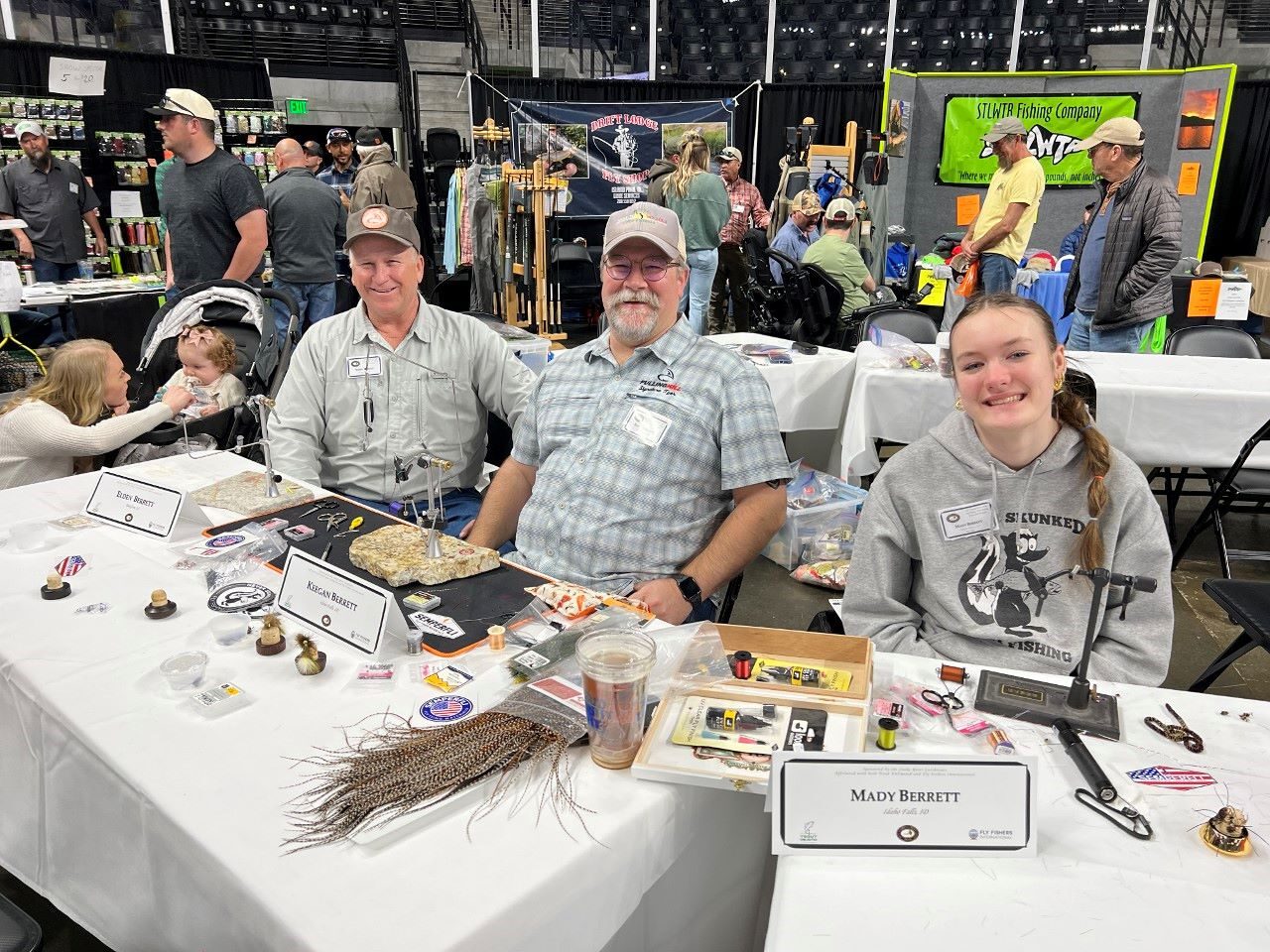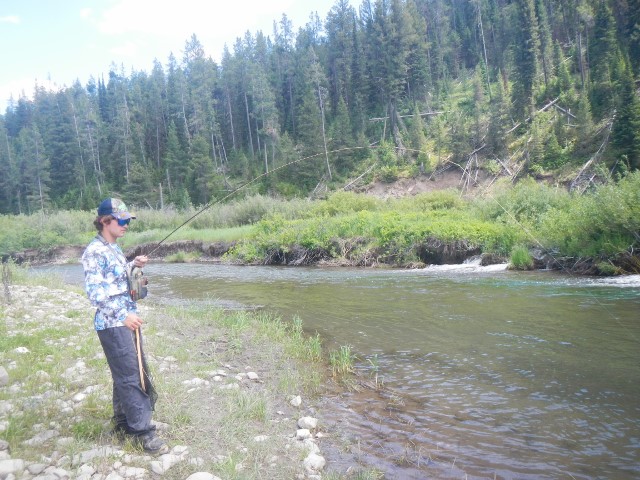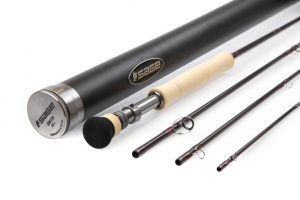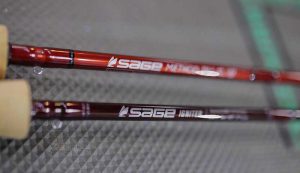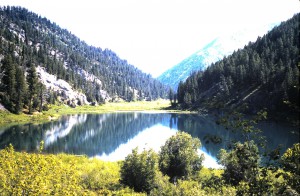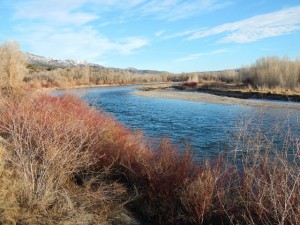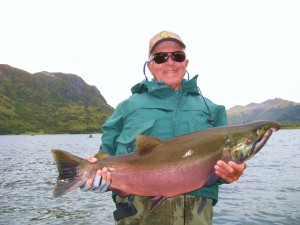Some Great Places to Introduce Neophytes to Fly Fishing
Certainly there are numerous locations in our area suitable for introducing a family member, young, middle-aged or senior person to fly-fishing. There, however, certain locations having attractions which make them choice candidates for this action. First and foremost, these locations are relatively safe when compared to large flowing waters. Then they are tranquil, meaning tending to be less crowded. And these locations offer superb chances for encountering feeding fish.
Definitely, these places cannot compare to the convenience of such as Ryder Park Pond, an excellent example of foresightedness on the part of Idaho Falls city administration and the Idaho Department of Fish and Game. But because of being near urban areas, these can become crowded during prime time.
We experienced fly-fishers tend to overlook an absolute when considering introducing a person to fly-fishing. That absolute is that big waters can be intimidating to the neophyte, let alone generally more perilous. Small waters reduce a location into “classroom size” thus offering a better chance of concentrating the entire fly-fishing experience of reading water, appropriate presentation, hooking, playing, landing, and releasing sport fish. All this comes about because salmonids tend to feed less selectively and more aggressively in small waters. Concentrating the beginning fly-fishing experience places the neophyte more quickly on the road to success on all waters.
To begin, let’s look at some streams that are great locations. For each of these a strategy applies. Resident trout tend to take wet flies until, around mid-day, when waters warm to the point that aquatic and terrestrial insects become active and thus available on the surface for feeding fish. As summer advances and waters warm, early and late in the day become the best times to fish but especially on still waters. Also, light weight tackle systems (ranging from 2-weight to four weight) are most appropriate for encountering these fish these waters.
Birch Creek

Add great scenery to the above mentioned small water aspects, and no stream is as good a candidate as Birch Creek. Just above Lone Pine and adjacent to State Highway 28, the Birch Creek Family Fishing Area is ideal. It features eager brook and rainbow trout. Both are wild and full of vigor. These tend to feed throughout the season, and will take any properly presented fly in small and medium sizes. Wet wading is a good choice for this easily approached stream, but no more than hip waders are necessary. This part of the creek is on private land, so practice due respect to fences and any structure or stock. A good way to express appreciation would be to carry out any trash encountered and to close open gates.
Upper Warm River
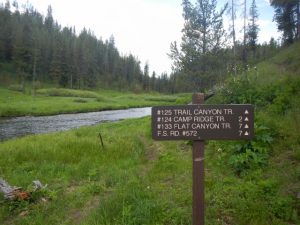
Upper Warm River is another good stream for introducing fly-fishing to an entry level person. Eager brook trout are the residents here, and all are endowed with the aggressive brook trout nature. Almost any small bead head nymph or peacock woolly worm presented using lightweight gear will bring responses from these small but aggressive brookies. The Pole Bridge campground makes a great base for enjoying fishing on this stream. It is not totally developed but serviceable. Access it by traveling the Mesa Falls Scenic Highway to the Warm River Road or the Hatchery Butte Road from the same highway. This is bear country, so particularly for overnight stays, follow proper procedures.
Sawmill Creek
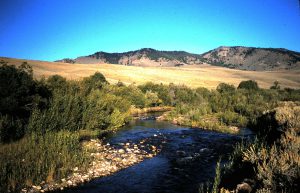
If you do not mind taking a one hundred and thirty mile drive, mostly across the desert then through the scenic Little Lost River Valley, Sawmill Creek is another great candidate for an entry level fly-fisher. From State Highway 33, follow the Little Lost River Road to the Sawmill Creek Road. There are no developed camping facilities here, but there are plenty of pull-outs from which fishing can be enjoyed. As with Birch Creek, wild brook and rainbow trout are the residents, and they are just as eager to take the same flies presented using light weight gear.
Some still waters make good locations for entry level fly-fishers. All of these feature the option of fishing from the shore or from a non-motorized boat or flotation device. Non-motorized means powered by an internal combustion engine.
Horseshoe Lake
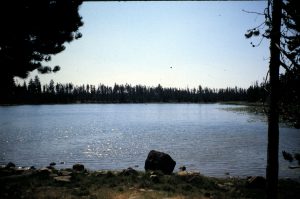
Horseshoe Lake Is a good example except that shoreline fishing takes a back seat to fishing from a flotation device or small boat. To get there, travel the Cave Falls Road off the Mesa Falls Scenic Highway. After entering the Caribou-Targhee National Forest (where pavement ends) travel about five miles to the Horseshoe Lake Road which heads northeast. About five miles later the lake comes in view on the right. Camping is primitive there, but relatively tranquil. The east arm of the lake is off limits to fishing, but the west end features lily pad banks in front of which is the best fishing. Grayling, supplemented by annual stockings, are the featured fish here. They are accompanied by rainbow trout, also stocked annually. When mayflies and damselflies are active these fish will feed on the surface and take any correctly sized imitation offered.
Jim Moore Pond

Jim Moore Pond (aka Roberts Gravel Pond) off the Osgood-Roberts Road (old Highway 91) is a good candidate. Stocked with rainbow and tiger trout (cross between brook and brown trout) , it offers a lengthy shoreline for bank fishing. These fish are supplemented each year by Idaho Department of Fish and Game (IDF&G) releases. Bank fishing here is ideal for fly-fishing because of ample room for back-casts. Best fly patterns are those simulating leeches, the main food form for trout. Small boats and flotation devices are easily launched and because of a small size this pond is not greatly impacted by winds.
Paul Reservoir
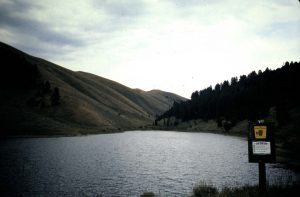
Paul Reservoir is another small still water ideal for teaching fly-fishing. The back side of the dam and the right-hand shore line offer great locations to cast from shore, and flotation devices can be launched conveniently from the dam. To get there, take Interstate-15 to the Humphrey Exit north of Spencer, Idaho. Coming from the south exit to the right, go underneath the Interstate and turn right onto the gravel road. After paralleling the Intestate for a short distance, the road loops to the left and proceeds for about twelve dusty, bumpy miles. Finally, after crossing a couple of small creeks it goes up a short rise, and Paul Reservoir lies in view. Cutthroat trout are residents here, and when damsel flies and speckled dun mayflies are mating and laying eggs, they come to the surface, and will take any floating imitation of these insects. Primitive camping sites are present in the pine grove above the right-hand shore. A bonus for fishing here is that Modoc Creek below the reservoir is loaded with small brook trout that take any small fly offered.
Snow Creek Pond
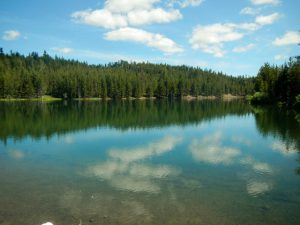
Snow Creek Pond (aka Teardrop Lake) is not far from Horseshoe Lake as the crow flies. To get there, take the Mesa Falls Scenic Highway to Three Rivers. Just below Warm River Campground, cross the river and travel up the Fish Creek Road about eight miles. Turn off right onto the Snow Creek Road, and proceed about three miles to this pond which is roadside left. Primitive camping sites are along the south shore where shallow water prevails for safe wading. Small boats and flotation devices can be launched here as well as at the north tip of the pond. Small brook trout have inhabited this pond as long as it has existed, and IDF&G replentishes its rainbow trout population. Both trout respond to small black leech patterns as well as drifting insect patterns.
This is but a sampler of the suitable locations in our area for entry-level fly-fishing, but those given above are among the most convenient. For sure there are others we can recommend. Visit the shop or contact us for more candidate waters to introduce that beginner to the fascinating fly-fishing world.
